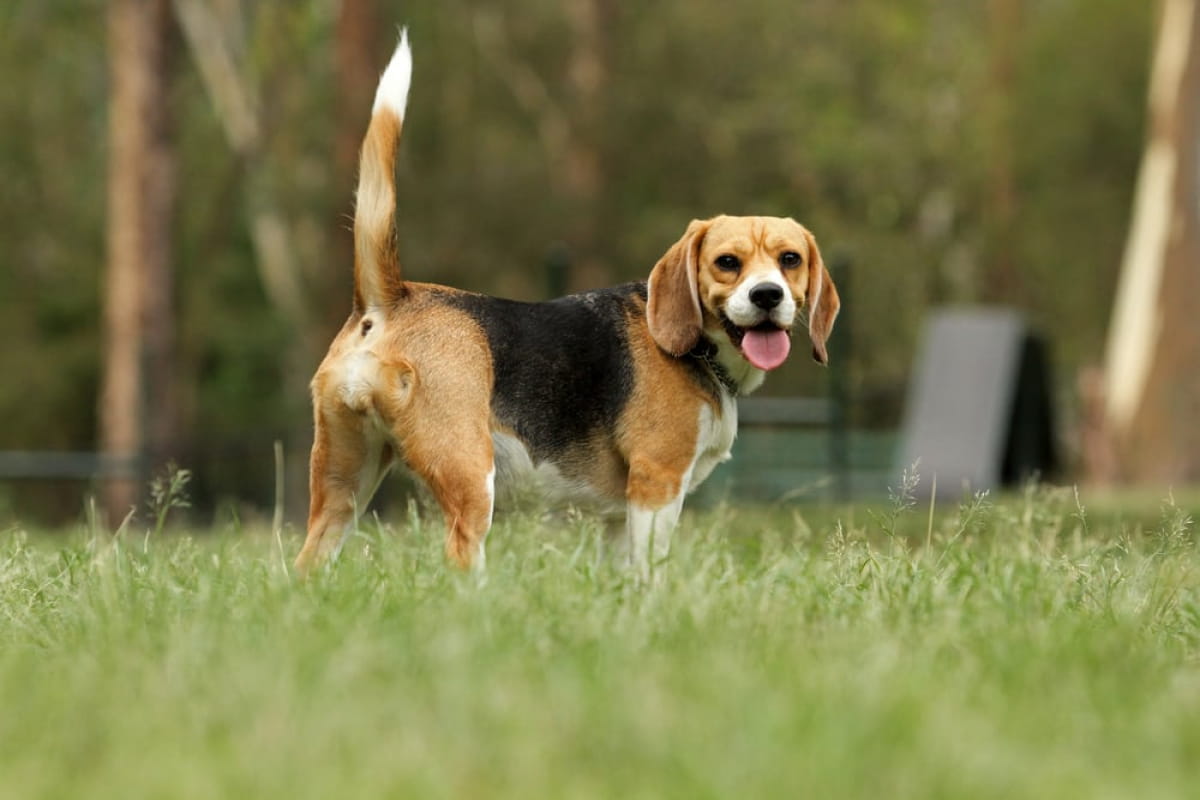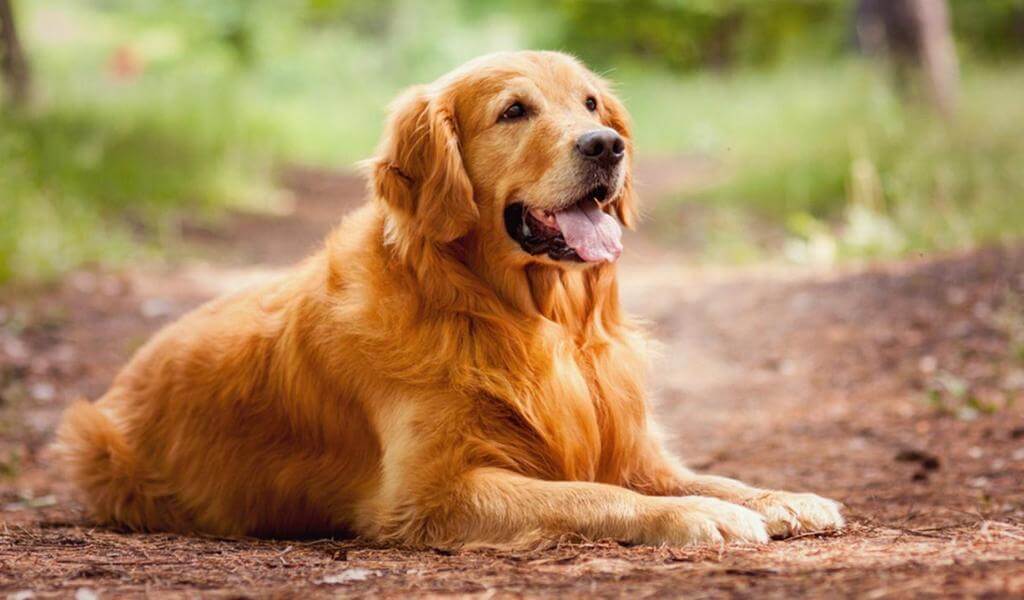Does your dog suddenly have trouble getting up, doesn’t want to jump on the couch anymore, and can hardly get up the stairs? Or does he suddenly no longer want to go for a walk and seems stiff in his movements? Then he may suffer from joint problems, which unfortunately are quite common, especially in larger dogs.
You can read about joint diseases, how to recognize them and what you can do about them here.
The most common joint diseases in dogs

Joints are the “hinges” of the body in dogs, just like in us humans. They allow our four-legged friends to move, run and jump or wag their tails. In these movements, all parts of the musculoskeletal system depend on each other to function smoothly.
If the bones or joints no longer work properly due to a disease, the muscles can no longer work properly, causing the body to lose its mobility.
Unfortunately, joint diseases in dogs are now a regular occurrence. Here is an overview of the ones that occur most frequently:
Arthritis and osteoarthritis
Osteoarthritis and arthritis are joint diseases with similar symptoms. Arthritis causes inflammation of the joints, which can progress in phases. Osteoarthritis is the breakdown of joint cartilage.
Osteoarthritis is a degenerative, chronic joint disease and one of the most common diseases in dogs. It has no cure as it leads to progressive and unstoppable destruction of articular cartilage, damaging the entire joint.
There are a number of causes for osteoarthritis in dogs: both congenital or acquired malpositions or incorrect stress on the joints, as well as injuries to the musculoskeletal system that have not healed well, excessive growth in large breeds or overweight can trigger the development of osteoarthritis.
The course of osteoarthritis is usually insidious and not immediately apparent. Significant symptoms usually only appear when the articular cartilage is already clearly damaged.
Hip Dysplasia (HD) & Elbow Dysplasia (ED)
Hip joint (HD) and elbow joint dysplasia (ED) are among the most well-known joint diseases in dogs. Dysplasia refers to the malformation of individual joint components.
Hip dysplasia is therefore a malformation of the hip joint. In larger dog breeds, this can already occur in puppyhood. HD is an abnormal formation of the acetabular cup. As a result, the femoral head no longer sits properly in the dog’s socket and can no longer move back and forth properly.
ED damages the elbow joint. It can be caused by several growth-related diseases of the elbow joint in dogs, i.e. by abnormal development of the joint during growth. ED can also occur in puppyhood and very early in development (lead to pain and osteoarthritis-like changes in the joint. If the disease is not recognized, the options for therapy are limited and the prognosis is all the worse the further the disease has progressed is.
Unfortunately, both HD and ED are often hereditary and are therefore particularly common in certain breeds, such as German Shepherds.
Spondylosis
Spondylosis describes a degenerative change in the spine that is usually caused by wear and tear. Bony growth of the vertebrae occurs along the spine, mostly on the underside, and rigid bone bridges form. The intervertebral spaces ossify, which leads to a stiffening of the spine. The area of the thoracic and lumbar vertebrae is particularly often affected. This limits the mobility of the dog and can cause severe pain. Herniated discs, signs of paralysis, incontinence and impairment of the nerve cords can also occur. Spondylosis is an unstoppable process and there is no cure. However, the symptoms can be treated and the pain relieved so that the dog’s quality of life can be maintained for as long as possible.
Osteochondrosis dissecans (OCD)

Osteochondrosis dissecans (OCD) is a joint disease that is quite common, especially in large dog breeds. It is a degenerative developmental disorder that affects the formation of articular cartilage.
The articular cartilage becomes too thick and can no longer be adequately supplied with synovial fluid and nutrients. As a result, the cartilage dies off and can detach completely or partially. The detached cartilage fragments can then attach themselves to the joint capsules, where they grow and eventually ossify. Joint inflammation often occurs, which is why dogs with OCD often also suffer from secondary osteoarthritis. The exact triggers for OCD are still unclear.
Interpret symptoms correctly: This is how you can recognize joint problems in dogs
First things first: Depending on which joint disease a dog has, the symptoms can be different and the dog can behave differently. Therefore, you should always keep a close eye on your dog, both a puppy and an older dog.
The easiest way to spot a potential problem is by your dog’s movement. You should therefore always keep an eye on how he moves, whether when getting up or during a walk. Possible symptoms occur particularly frequently after a longer period of rest, i.e. after a nap or early in the morning.
Ask yourself the following questions:
Is my dog calmer than usual?
Does he have trouble getting up or lying down?
Is it a bit stiff after lying down for a long time and is it difficult to move?
Does he not like to go for walks anymore or does he only stroll behind you when you go for a walk?
Doesn’t he really want to climb stairs anymore?
Doesn’t he like jumping in the car or on the sofa anymore?
Do his hindquarters sway when he walks?
Is he sensitive to pain or aggressive when you touch certain parts of his body?
Does he sometimes become aggressive toward you or other dogs for no apparent reason?
Does he have trouble raising his leg, scratching his ear, and/or rolling over?
Isn’t he eating well?
These can all be signs that your dog is in pain and has joint disease. If you answered “yes” to any of these questions, or your dog is just behaving differently than it used to, you should definitely contact your veterinarian and have the dog checked out and x-rayed! Because the earlier a joint disease is detected, the more you can do to help your dog.
Treating and preventing joint diseases: You can do that
If it is clear that your dog has problems with the joints, this is of course not good news. Nevertheless, you can do a lot to help him and still enable him to live a nice and pain-free life.
You can also do a number of things to ensure that your dog does not develop any joint problems in the first place.
Pay attention to the right diet
A balanced diet adapted to the dog is the be-all and end-all to keep the dog healthy for as long as possible! Although many joint diseases are genetic, diet is one of the biggest factors that can also contribute to joint diseases. The right food plays an essential role, especially for puppies and growing dogs. If these are fed with too much energy and the energy supply is too high, the bones can grow too quickly. This means that the bones grow too quickly and the cartilage and ligaments are not yet stable enough to support the high weight of the bones sufficiently well. Joint damage is inevitable. The energy intake should therefore be moderate at a young age.
In addition to the right energy supply, an adapted supply of minerals and vitamins is also extremely important. Due to bone growth, young dogs need more calcium and phosphorus than adult dogs. If these minerals are not present in the feed in sufficient quantities, the bones become too “soft” and are not strong. But an oversupply of calcium and phosphorus during bone growth can also lead to problems, the bones become brittle and can splinter.
Your dog’s food should therefore always be adapted to his phase of life. Your puppy needs the right puppy food, the young dog needs young dog food and adult dogs and senior dogs also need adapted meals.
So make sure to choose a food that is optimally adapted to the nutrient requirements and the respective phase of life of your dog. If you are unsure, consult a canine nutritionist or your veterinarian.
Avoid being overweight
As with us humans, obesity is also very harmful to our dogs. If the dog is overweight, its joints can be damaged over time as they are subjected to greater stress. This can lead to poor posture, pain during movement and chronic joint diseases.
Therefore, check your dog’s weight on the scales regularly. You can also find out whether your dog is at the ideal weight by simply touching and looking at it:
If you look at your dog from above or from the side, you should be able to see their waist clearly. In addition, when palpating behind the chest, a clear inward curve should be felt.
You should be able to feel the dog’s ribs through thick fur when you stroke them lightly without having to press hard. A small layer of fat over the ribs is normal. If your dog is at ideal weight, you can count his ribs by running your hand over them.
If you run your hand lightly down his back, you should be able to feel each vertebra clearly, even on a well-muscled dog. If this isn’t the case, your dog probably has pockets of fat on its back that don’t belong there.
Always make sure not to feed your dog more than he needs and keep an eye on his calorie needs. If you use treats for training or play, or if your dog gets snacks in between, you should reduce his food ration accordingly. You can also use low-fat treats if possible. And, of course, getting enough exercise is particularly important.
Make sure you exercise regularly

Regular exercise is essential for healthy canine joints. Articular cartilage can only be supplied with sufficient nutrients through even loading and unloading. In addition, regular exercise strengthens your dog’s muscles, ligaments and tendons and thus promotes joint health.
But beware: The type and duration of the movement should be adapted to the breed and age of the dog! Because both too little and too much exercise can have a negative effect!
Especially with young, but also with older dogs, abrupt stops or tight changes of direction should be avoided. Also, a young dog up to the age of one year should not go on a bike or do sports such as agility. Otherwise, abrupt movements or excessive strain almost inevitably lead to joint disease.
Ideally suited for young dogs is easy walking on soft and springy surfaces such as forest floors or meadows. Walking slowly over uneven surfaces such as sticks and branches or bars is also useful for coordination training.
Swimming also promotes healthy dog joints, as it trains the entire musculature and the joints are not stressed by the buoyancy of the water.
Avoid stairs, ball games, and jumps
Under no circumstances should growing dogs or dogs that already have joint problems be subjected to excessive stress through abrupt movements!
High jumps, e.g. from the trunk, intensive climbing of stairs, and fast ball games should therefore be avoided. Because the sudden stopping and turning movements have a massive impact on the joints and can greatly aggravate the symptoms in dogs that are already ill. To get on the sofa or in or out of the trunk, special boarding aids or ramps for dogs can be used. Such a ramp can also be laid over steps. Another variation is to carry the dog up stairs and lift it out of the trunk.
Offer suitable berths

Your dog should definitely have the opportunity to lie comfortably and well padded. The cold ground should not penetrate the pillow, as this is not good for aching joints. The bed should also not be so soft that the dog sinks deep into it and then has difficulty getting up again! So-called orthopedic dog beds, which are thickly padded and relieve the dog’s joints with their special mattresses, are particularly suitable.
Feed supplements
Various dietary supplements are available to support your dog’s cartilage, tendons and ligaments, such as green-lipped mussel powder, collagen or rosehip powder. It is important that the dosage is adjusted to the weight of your dog and that the ingredients are of organic quality.
Use physiotherapy & osteopathy
Physiotherapy and osteopathy for dogs support sick dogs. Physiotherapy in particular can use certain exercises and measures to specifically promote your dog’s muscle and condition development and help him to regain his coordination. Strong muscles protect bones and joints and minimize the risk of injury.
Physiotherapy can also be used preventively in young dogs, e.g. B. in mild forms of hip dysplasia or to slow down the development of spondylosis and prevent herniated discs. The progression of the disease can sometimes be stopped by specifically strengthening the muscles in the affected body region. Osteopathy is a holistic concept. Attempts are made to get to the bottom of the cause of the symptoms and to eliminate blockages in a targeted manner.
Administer medication in a timely manner

In addition to all prophylactic and accompanying measures, one thing is significant: Changes in the joints cannot be reversed. Your dog needs lifelong therapy.
So if you notice that your dog is not walking smoothly despite all the above approaches or shows pain, please do not hesitate to give him a painkiller from the vet in good time. Nowadays, painkillers are no longer as aggressive to the stomach, intestines and kidneys as they were a few years ago. There are many pain relievers that are safe to use over a long period of time. Because the most important thing is that your dog can enjoy life without pain!





























